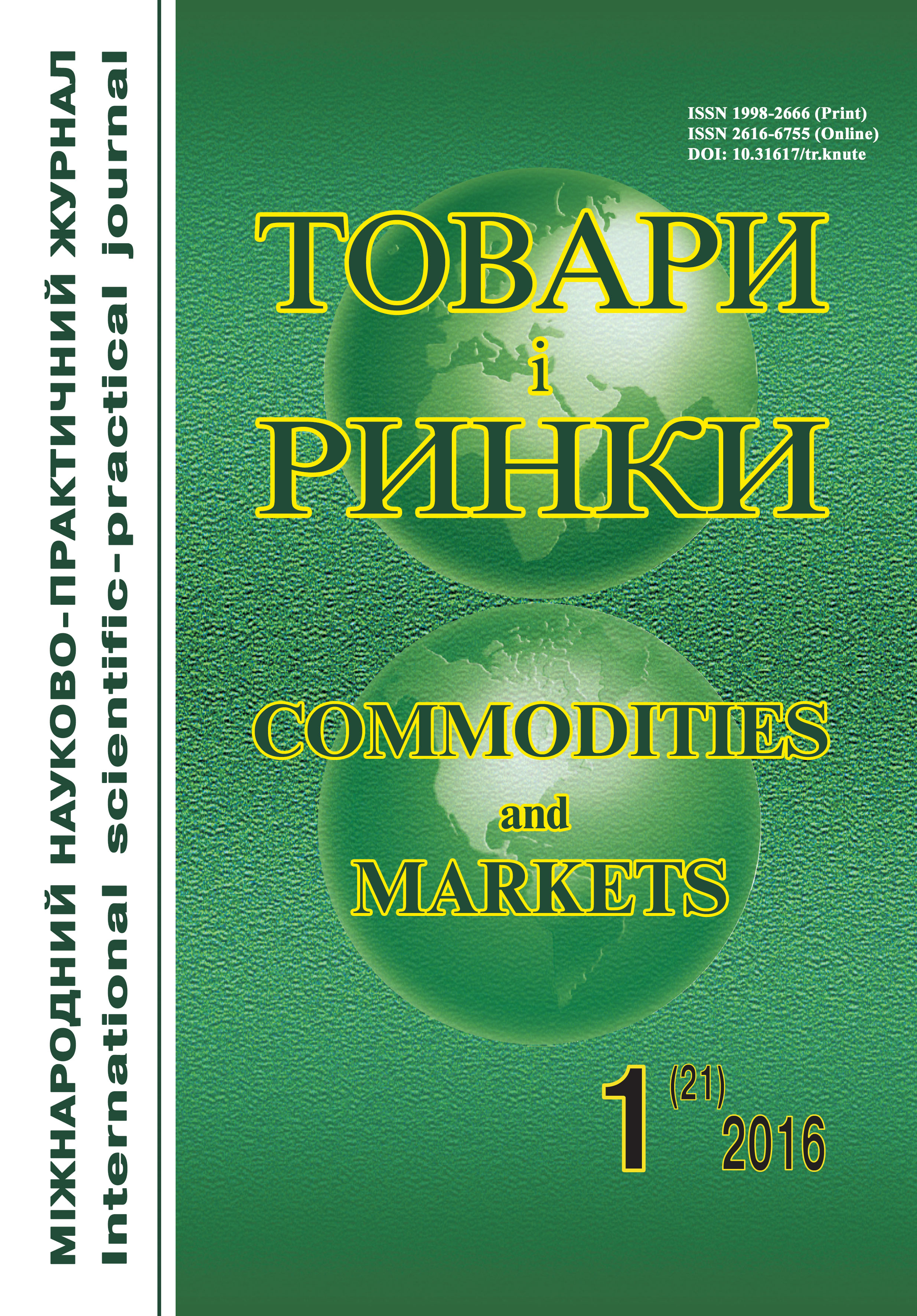Heat-protection properties of blankets with bulking fillers
Keywords:
bedding products, blankets, fillers, heat-protection propertiesAbstract
Background. Forming the assortment of bedding products with bulking fillers causes the necessity to research their heat-protection properties.
The aim of the work is to research heat-protection properties of blankets with bulking fillers.
Material and methods. The objects of research are represented by the ten samples of blankets with bulking fillers of different fibrous structure which are manufactured by the limited liability company Herd Billirbeck GmbH (Kyiv).
A number of studies have been held using standard methods at the laboratory of the production analytical studies and testing by the scientific and technical centre of confirming the compliance, standardization and probation of the light industry production and means of self-defense of State Enterprise Ukrmetrtestandart (Kyiv, Ukraine).
Results. The thermal properties study has allowed to form a number of blankets according to the thermal characteristics from the warmest ones up to the least warm ones depending on the type of a filler: down-feather >wool (camel) >wool (sheep) >cotton >bamboo >cashmere >liotsell >silk >polyester fibre.
The suggested regularity about the fact that the level of total thermal resistance depends on air permeability of a filler package is proved by the results of microscopic studies of the fillers samples. The less heat conduction is, the higher the level of thermal resistance becomes. The fillers studied (down-feather and camel wool) can provide the high level to keep heat. The presence of fibers of different diameter can help to create the structure which is the most stable to rumpling and tangling that may be considered as positive fact to forecast the end-use properties of blankets with corresponding fillers.
It is foreseen that while using the blankets with fillers of sheep wool and polyester fibre, the loss of elasticity may occur resulting in worsening their heat-protection characteristics.
Conclusion. It has been proved, that the type of the filler with different fiber thickness affects the level of air permeability and total thermal resistance of blankets: the down-feather filler features the highest level of thermal resistance, synthetic polyester fiber, having the absolutely opposite indices of air permeability – the lowest one.
It has been found that the bulking structure of a filler has great importance while assessing thermal properties of blankets.
It has been foreseen that the presence of fibers of different diameter in the blankets with bulking fillers can help to create the structure which is the most stable to rumpling and tangling that may be considered as positive fact to forecast the end-use properties of blankets.
References
Razbrodin A. V. Issledovanie termicheskogo soprotivlenija i teplovoj raschet stegannyh odejal s razlichnymi napolniteljami : dis. … kand. tehn. nauk : 05.19.02 / Razbrodin Andrej Valentinovich. — M., 2006. — 265 s.
Boeva-Kashlova G. Issledovanie teplofizicheskih harakteristik dvuhkomponentnyh netkanyh materialov / G. Boeva-Kashlova // Mіzhnar. nauk.-prakt. zhurn. "Tovari і rinki". — 2009. — № 1. — S. 104—109.
Suhodol'skij M. A. Issledovanie vlijanija poristosti na teploprovodnost' tkanej / M. A. Suhodol'skij, V. V. Isaev // Tekstil'naja prom-st'. — 2007. — apr. — S. 4—47.
Kolesnikov N. V. Issledovanie teplozashhitnyh svojstv funkcional'nyh trikotazhnyh poloten bel'evogo naznachenija / N. V. Kolesnikov, A. F. Davydov // Tekstil'naja prom-st'. — 2011. — № 3. — S. 32—33.
Abdukajumov A. A. Neopredelennost' metodiki izmerenija teploprovodnosti vlazhnyh trikotazhnyh poloten / A. A. Abdukajumov, R. R. Dzhabbarov, O. Sh. Hakimov // Systemy obrobky informacii'. — 2012. — Vyp. 1. — S. 97—99.
Galavs'ka L. Je. Matematychne modeljuvannja perenesennja tepla kriz' tekstyl'nyj material / L. Je. Galavs'ka // Visnyk KNUTD. — 2012. — № 1. — S. 105—109.
Janenko O. P. Metody ta zasoby kontrolju fizychnyh parametriv tekstyl'nyh materialiv / O. P. Janenko, O. A. Vaganov // Visnyk NTUU "KPI". — 2009. — Vyp. 38. — S. 107—111.
Pugachevs'kyj G. F. Tovaroznavstvo neprodovol'chyh tovariv. Ch. 1. Tekstyl'ne tovaroznavstvo : pidruch. / G. F. Pugachevs'kyj, B. D. Semak. — K. : NMC "Ukoopspilka". — 1999. — 596 s.
GOST 20489–75. Materialy dlja odezhdy. Metod opredelenija summarnogo teplovogo soprotivlenija. — Vved. 1976—01—01. — M. : Izd-vo standartov, 1985. — 9 s.
GOST 12088–77. Materialy tekstil'nye i izdelija iz nih. Metod opredelenija vozduhopronicaemosti. — Vved. 1979—01—01. — M. : Izd-vo standartov, 1985. — 10 s.
Fizika : jenciklopedija ; pod red. Ju. V. Prohorova. — M. : Bol'shaja Rossijskaja jenciklopedija, 2003. — S. 748.
Rajkova E. Ju. Teorija tovarovedenija : uchebn. posobie / E. Ju. Rajkova, Ju. V. Dodonkin. — M. : Izdatel'skij centr "Akademija", 2004. — 240 s.



